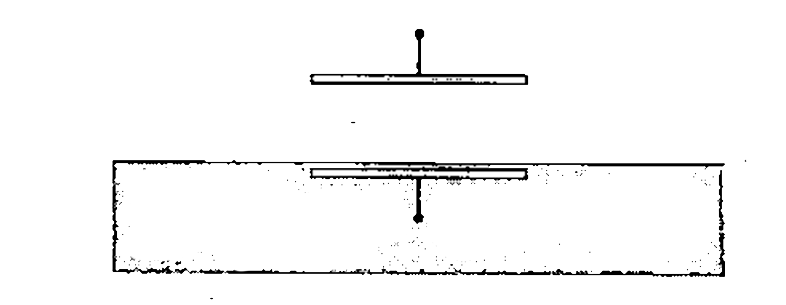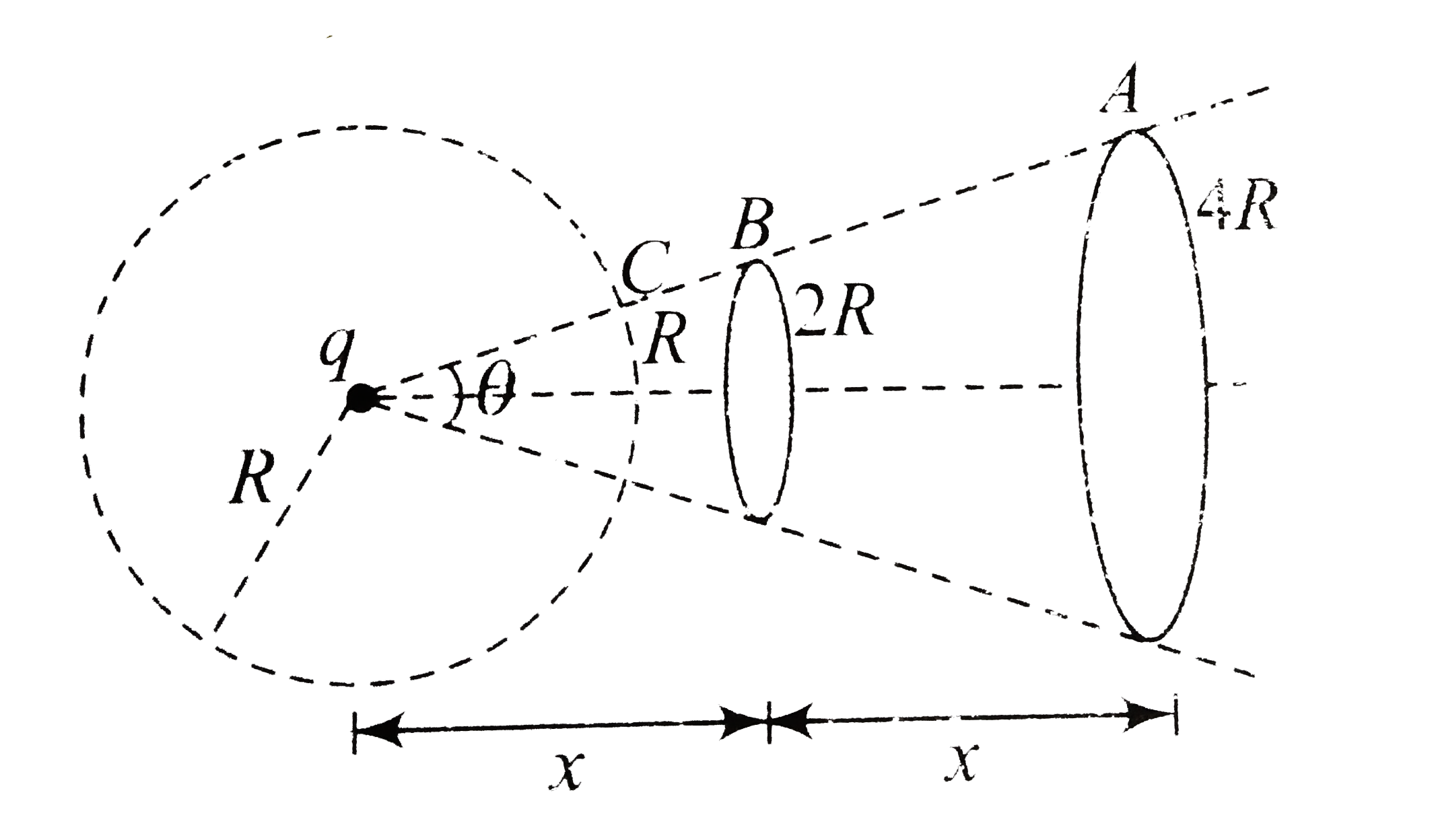At which of the two points, or , of a charged capacitor with nonparallel plates is the surface charge density greater?
At point 1, distance between the plates is less, so attraction between the charge here can be more due to which concentration of charge at point 1 will be more.
Topper's Solved these Questions
- BOOK - CENGAGE PHYSICSCHAPTER - CAPACITOR AND CAPACITANCEEXERCISE - Exercise 4.232videos
CAPACITOR AND CAPACITANCE
- BOOK - CENGAGE PHYSICSCHAPTER - CAPACITOR AND CAPACITANCEEXERCISE - Subjective24videos
CAPACITOR AND CAPACITANCE
- BOOK - CENGAGE PHYSICSCHAPTER - CAPACITOR AND CAPACITANCEEXERCISE - Solved Examples10videos
CAPACITOR AND CAPACITANCE
- BOOK - CENGAGE PHYSICSCHAPTER - ATOMSEXERCISE - QUESTION BANK40videos
ATOMS
- BOOK - CENGAGE PHYSICSCHAPTER - CENGAGE PHYSICS DPPEXERCISE - subjective type51videos
CENGAGE PHYSICS DPP
Similar Questions
Figure shows a horizontal parallel plate capacitor is lowered on a liquid surface in such a way that its lower plate is just submerged in the liquid of dielectric constant k. Find the height to which the liquid level will be raised between the plates if the capacitor plates are given a surface charge density +σ and−σ on its plates.
 View Solution
View SolutionExplain the underlying principle of working of a parallel plate capacitor .
If two similar plates , each of area A , having surface charge densities +σ and −σ are separated by a distance 'd' in air , write expression for :
the capacitance of the capacitor so formed .View Solution
Knowledge Check
- Question 1 - Select One or More
The plates of a parallel plate capacitor are, not exactly parallel. The surface charge density therefore :
Ahigher at the closer endBthe surface charge density will not be uniformCeach plate will have the same potential at each point.Dthe electric field is smallest where the plates are closest. - Question 2 - Select One or More
The plates of a parallel plate capacitor are, not exactly parallel. The surface charge density therefore :
AIs higher at the closer endBThe surface charge densitywill not be uniformCEach plate will have the same potential at each pointDThe electric field is smallest where the plates are closest - Question 3 - Select One
If the two plates of the charged capacitor are connected by a wire, then
Apotential will becomes infinteBcharge will becomes infiniteCcapacitor will get dischargedDcharge will becomes double that of earlier one
If a small sphere of mass m and charge q is hung from a silk thread at an angle θ with the surface of a vertical charged conducting plate, then for equilibrium of sphere, the surface charge density of the plate is
View SolutionIf a small sphere of mass m and charge q is hanged from a silk thread at an angle θ with the surface of a vectical charged conductinb plate, then for equilibrium of sphere the surface charge density of the plate -
View SolutionAssertion: The force with which one plate of a parallel plate capacitor is attracted towards the other plate is equal to square of surface density per ε per unit area.
Reason: The electric field due to one charged plate of the capacitor at the location of the other is equal to surface density per ε.View SolutionA parallel plate capacitors of plate area A has a total surface charge density +σ on one plate and a total surface charge density −σ on the other plate. The force one plate due to the other plate is given by :
View SolutionTwo nonconducting plates A and B of radii 2R and 4R, respectively, are kept at distance x and 2x from the point charge q. A surface cutout of a nonconducting shell A is kept such that is center coincides with the point charge. Each plate and spherical surface carries surface charge density σ.

If FA,FB,andFC are the forces on plate A, plate B, and spherical surface C due to charge q, respectively, thenView Solution

